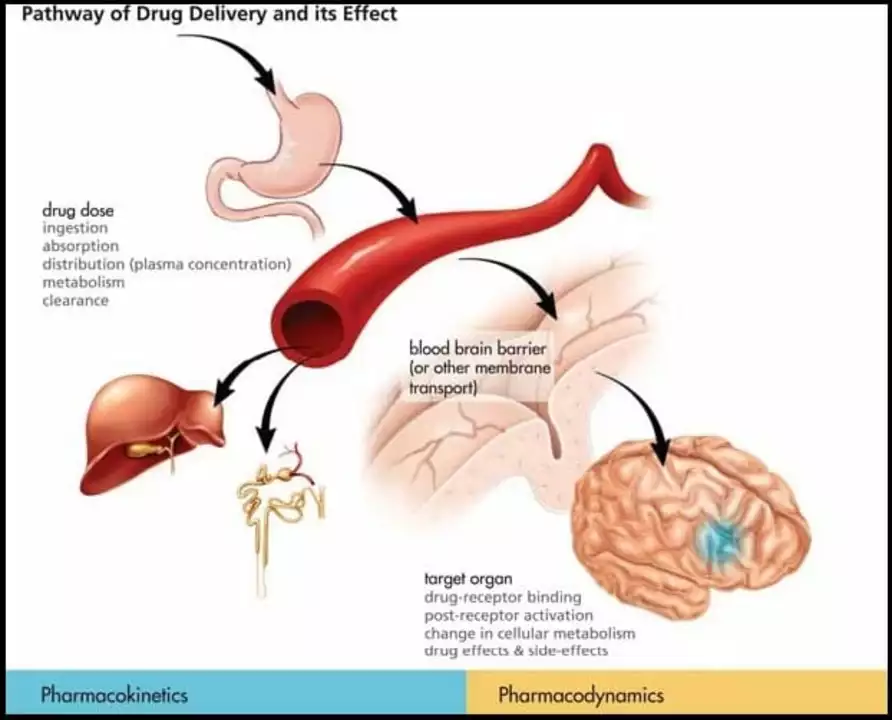Pharmacodynamics — what your medicine actually does
Why does one pill kick in in 30 minutes and another take weeks to show results? Pharmacodynamics answers that: it explains how a drug produces its effects in the body. That includes which protein or receptor the drug hits, how strong the effect is, how long it lasts, and what side effects come with it.
Think of a drug like a key and a receptor like a lock. Some keys open the lock fully (full agonists), some only partly (partial agonists), and some block the lock (antagonists). Two common terms you’ll see are potency — how much drug you need to get an effect — and efficacy — the biggest effect the drug can produce. A highly potent drug isn’t always the best choice if its efficacy or safety is poor.
How pharmacodynamics affects real medicines
Look at atorvastatin (Atorlip 10). It works by blocking HMG-CoA reductase in the liver. That biochemical block reduces cholesterol production, but LDL levels fall over weeks — that slow timeline is a pharmacodynamic reality. By contrast, isosorbide mononitrate opens blood vessels quickly via nitric oxide release, so angina relief can happen within minutes.
Other examples: Flexeril (cyclobenzaprine) acts in the central nervous system to reduce muscle spasm and causes sedation — the same mechanism that helps pain may also make you drowsy. Terbinafine (Lamisil) targets a fungal enzyme and needs weeks or months to clear nail fungus because killing the fungus and replacing the nail takes time. Acetaminophen gives fast relief by acting in the brain’s pain pathways, but it has a narrow safety margin at high doses — that’s pharmacodynamics meeting safety.
Some effects build tolerance. Nitrates, for example, can become less effective with continuous use because receptors and signaling adapt. Other drugs show dose-related side effects: higher agonist activity may bring better symptom control but also more risk.
Quick practical checklist before you take or switch a medicine
- Ask: What’s the mechanism? How soon should I feel better and how long will it last?
- Check potency vs effect: Do I need a high dose to work, and is that dose safe?
- Look at side effects tied to the mechanism — sedation, blood pressure changes, organ toxicity — and plan around them.
- Watch for interactions that change effect (additive sedation, opposing actions) and for tolerance over time.
- Know what monitoring matters: lipid panels for statins, liver tests for terbinafine in some cases, symptom tracking for pain meds.
When you read our posts tagged pharmacodynamics, look for clear notes on mechanism, expected timeline, typical side effects, and monitoring needs. That helps you talk with your prescriber and use medicines safely and smarter.

